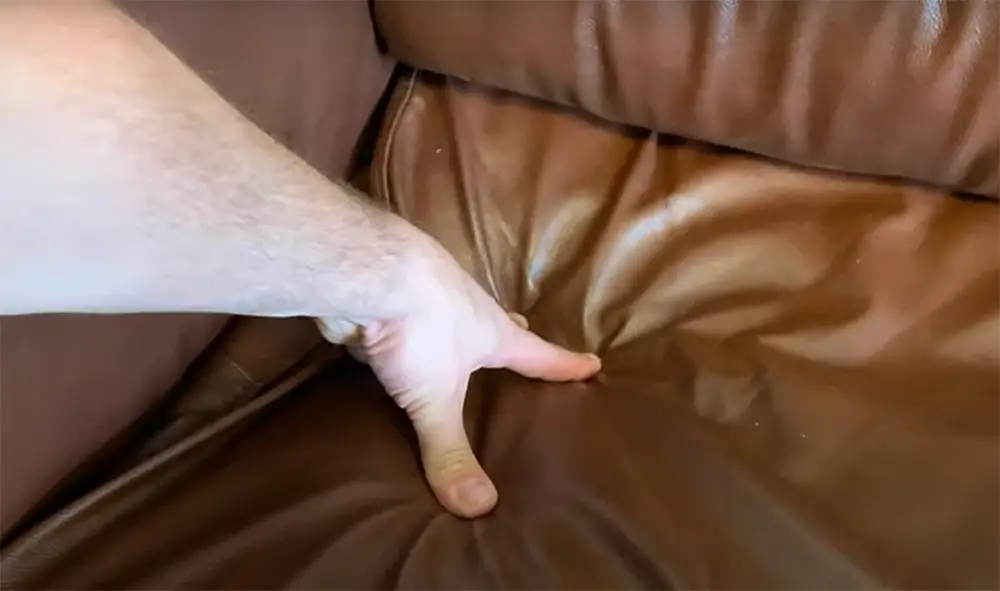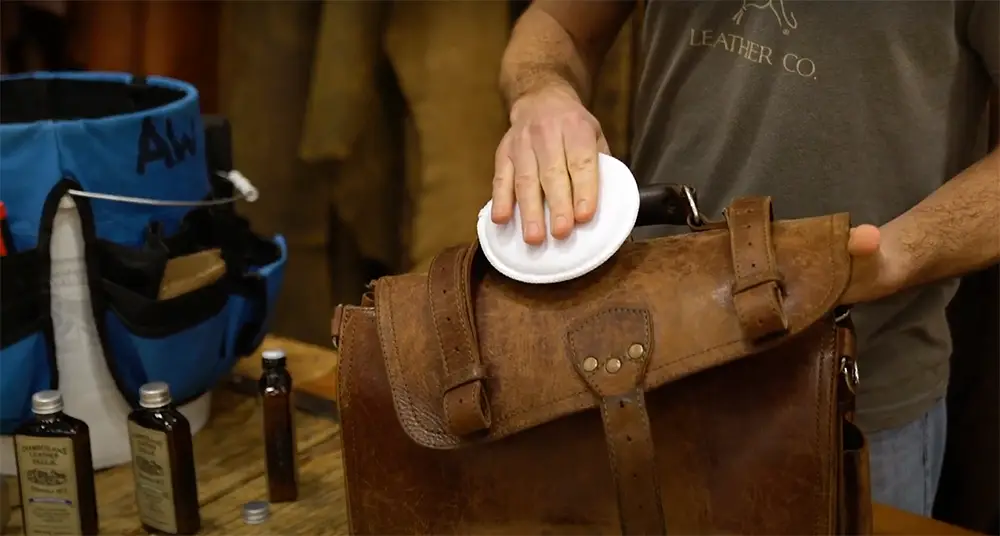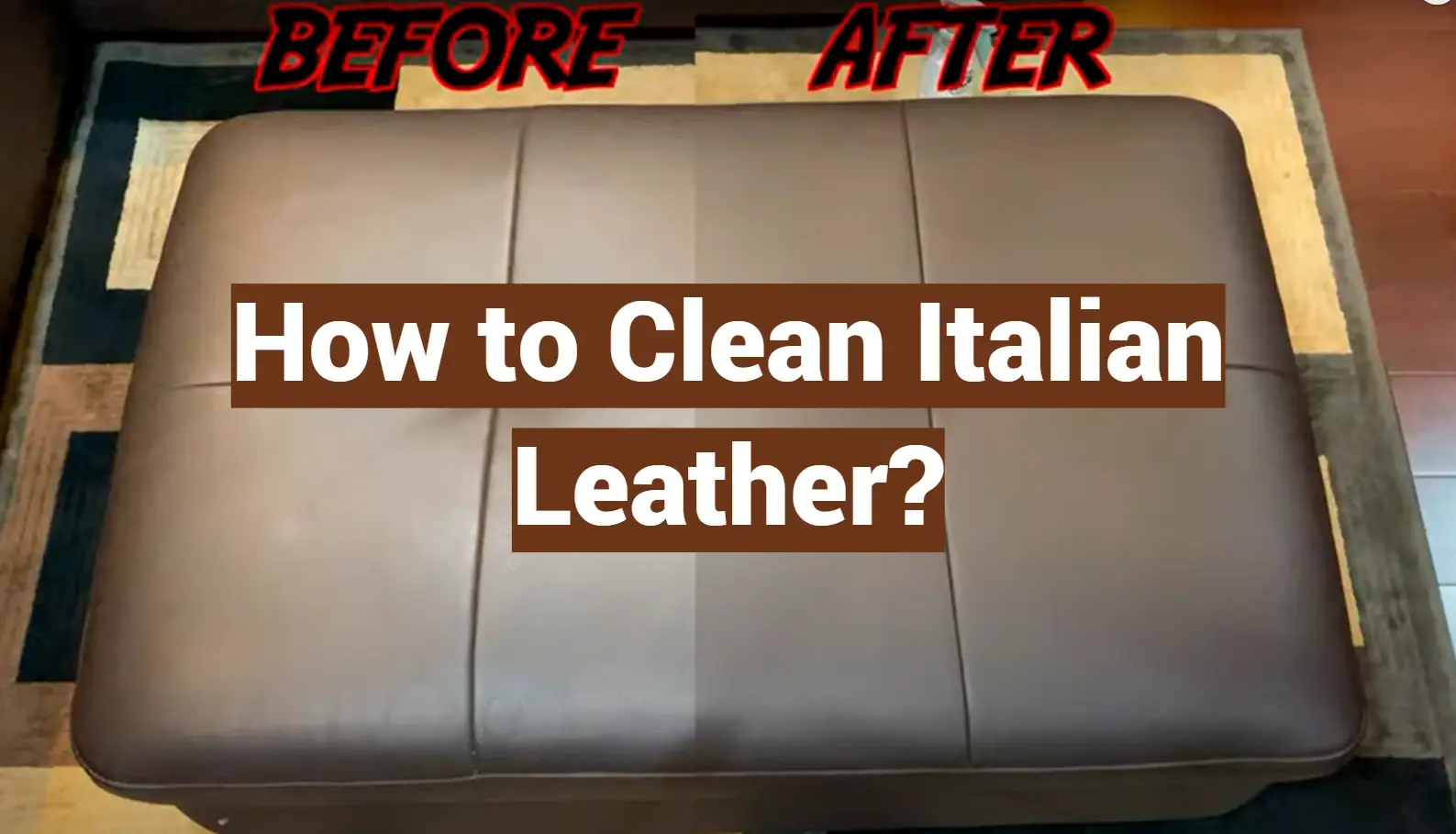Leather is a beautiful and luxurious material, but it needs to be properly cared for in order to maintain its appearance and extend its lifespan. In this comprehensive guide, we will teach you how to clean Italian leather using simple, easy-to-follow steps. We’ll also provide some helpful tips on how to prevent your leather furniture or accessories from becoming stained or soiled. So whether your leather is new or old, read on for the best advice on how to keep it looking fabulous!
Origins of Italian Leather
The craftsmanship of Italian leather is renowned all over the world. This reputation has been built over centuries of experience and tradition passed down from generation to generation.
Italian leather is made from full-grain cattle. The leather then undergoes a vegetable tanning process which uses tannins and other natural materials found in tree bark, leaves, and fruits to preserve the hides. This method of tanning is what gives Italian leather its distinctive smell as well as its durability.
This process of making Italian leather is also a time-consuming task, tanning can actually take months to complete. It is this attention to detail and quality that makes Italian leather so sought after by designers and consumers alike. The result is a beautiful, supple material that’s perfect for high-end furniture, clothing, and accessories.

Italian leather has a natural beauty that’s unmatched by other types of leather. Its smooth surface and rich color make it a popular choice for luxury products. But because it’s so delicate, it can be easily damaged if not cared for properly.
Quality
When you invest in Italian leather, you’re investing in quality. This premium material is built to last, which is why it’s often used in high-end products. But because it’s so expensive, you’ll want to take extra care of it to keep it looking its best.
Vegetable-tanned
Vegetable-tanned leather is the most common type of Italian leather. It’s made with tannins extracted from tree bark and other plants, which give it a rich, natural color. This leather is also very durable, making it ideal for products that will see a lot of wear and tear. The art of vegetable-tanning has been practiced in Italy for centuries, and it’s still used today to create some of the finest leathers in the world. [1], [6]
Where Italian Leather is Mostly Used?
Italian leather is used in many high-end furniture products, clothing, shoes, and accessories. Many luxury brands use Italian leather in their products due to its softness, durability, and natural beauty. [1]
How to Maintain Italian Leather
Unfortunately, Italian leather is also notoriously difficult to care for. Because it’s so delicate, it can easily be damaged by harsh cleaning products or incorrect cleaning methods.
Here are a few tips for how to clean and maintain Italian leather.
Keep your italian leather items and furniture away from direct sunlight
Sunlight can cause the leather to fade and eventually crack. If you must place your furniture in direct sunlight, make sure to rotate or cover it regularly so that all sides get an equal amount of sun exposure.
If your Italian leather furniture does get exposed to sunlight or heat, be sure to moisturize it regularly with a quality compatible leather conditioner. [2], [4]
Check the brand’s recommendations
Before you attempt to clean your Italian leather furniture, check the manufacturer’s care instructions. These will usually be found on a label underneath one of the cushions.
Usually, the manufacturer will point out what kind of leather you have, as well as what cleaning products and methods you should use. If there are no care instructions, or you can’t find them, proceed with caution.
Watch after the humidity in your room
Ideal humidity levels for Italian leather are between 30% and 50%. You can use a humidifier or dehumidifier to help maintain these levels in your home. [2]
Use vacuum cleaner to suck the debris
Use a vacuum cleaner with a soft brush attachment to suck the debris from the leather. Be careful not to press too hard or use a high setting, as this can damage the leather.
Once you’ve removed all the dirt and grime, you can proceed with cleaning. [2], [4]
Clean it with a dry cloth
In general, it’s best to clean italian leather in the driest and mildest way possible. Which means, simply wiping it down with a dry, soft cloth.
If your leather furniture or clothing gets really dirty, you can clean it with a gentle soap and lukewarm water. Be sure to test the soap on an inconspicuous area of the leather first to make sure it won’t damage the material.
Dilute the soap in warm water and apply it to the stain with a slightly dampened soft cloth. Gently rub the area until the stain is removed. Rinse off the soap with clean water and dry the leather with a soft towel.
Be sure to always use distilled water when cleaning leather, as regular tap water can contain minerals that will damage the material. Same goes for soap, look for a non-detergent soap that won’t strip away the natural oils in the leather. Don’t use too much water however as leathers are very sensitive to moisture. In general, it’s best to avoid getting any liquids on Italian leather. If you do spill something, blot up the spill as quickly as possible with a clean, dry cloth.
Don’t use any hard brushes or apply too much pressure when cleaning, as this can damage the leather.
Never use harsh chemicals or abrasive cleaners on Italian leather. These products will strip away its natural oils, causing it to dry out and crack. If you must use a cleaner, be sure to choose one that is specifically designed for use on leather. Follow the directions on the packaging carefully to avoid damaging your furniture or clothing. [2], [3], [4], [5]
Apply leather conditioner

After cleaning, you can apply a leather conditioner to help maintain the material’s flexibility, prevent it from drying out as well as give it a nice glow.
Apply the conditioner according to the directions on the packaging. In most cases, you will need to apply it with a soft cloth and then buff it into the leather. Be sure to avoid getting any conditioner on clothing or other fabrics, as it can cause staining.
Conditioning your Italian leather furniture or clothing regularly will help keep it looking its best for years to come. [2], [4]
Always air dry your leather
After cleaning or conditioning, be sure to always air dry your leather. Avoid using a hair dryer, as the heat can damage the material. [3], [4]
Protect your leather with a cover
If you have Italian leather furniture, you may want to consider using slipcovers or throws to protect it from dirt, dust and stains. This is especially important if you have children or pets, as they can be the biggest culprits when it comes to ruining leather furniture.
Of course, covers will need to be removed and washed periodically, but they can go a long way in protecting your investment. [2], [4]
FAQ
Is Italian leather easy to clean?
Italian leather is not difficult to clean, but it does require special care. You should avoid using harsh chemicals or cleaners that contain alcohol, as these can damage the leather. Instead, wipe it with a soft dry cloth or use a vacuum cleaner. For harsher stains, opt for a mild soap and water solution. Gently wipe down the surface of the leather with a damp cloth, then dry it off with a soft towel. Be sure not to go overboard with the dampening, as too much water can damage the leather.
Is Italian leather good for a sofa?
Italian leather is some of the highest quality leather available, so it is definitely good for a sofa! Not only is it durable, but it also has a luxurious look and feel. If you have Italian leather furniture, you want to be sure to take care of it so that it lasts for many years.
Just be sure to cover it with a good quality leather conditioner every few months to keep it from drying out and cracking.
Is Italian leather better than other leather?
While there are many types of leather, Italian leather is widely considered to be some of the best. It is known for its softness, durability, and elegant appearance. Yet, it’s also hard to maintain.
What is the best cleaner for Italian leather?
There are a few different ways to clean Italian leather, but the best way is to use a gentle soap that won’t damage the leather. Another option is to use a compatible soft cleaner. You can find these cleaners at some stores.
What is the best way to take care of Italian leather?
Leather is a natural material that needs to be cared for in order to extend its life. One of the best ways to take care of Italian leather is by using a leather conditioner. Leather conditioner helps protect the leather from drying out and becoming brittle. It also helps keep the leather soft and pliable.
Be sure to read the instructions on the bottle carefully. Some leather conditioners should not be used on suede or nubuck. You should also test a small area of the leather before applying the conditioner to make sure it doesn’t cause any discoloration or staining.
What should you avoid when cleaning Italian leather?
When cleaning Italian leather, avoid using any type of aggressive cleaner – such as alcohol, ammonia, or bleach. These types of cleaners can damage the leather and cause it to become dry and cracked.
You can clean leather with a mild soap or saddle soap. Be sure to rinse the leather thoroughly afterwards with cold water. Let the leather air-dry after you are done cleaning it.
Can you use a vacuum cleaner on Italian leather?
Yes, you can use a vacuum cleaner on Italian leather, but be sure to use an aggressive cleaner attachment. Do not use the brush attachment when cleaning the leather.
The bristles could damage the surface. Instead, use the crevice tool or upholstery attachment to clean it. Make sure to vacuum in all directions to remove any dirt or dust particles that may be lodged in the pores of the leather.
How can you prevent your Italian leather furniture from becoming stained or soiled?
There are a few things you can do to prevent your Italian leather furniture from becoming stained or soiled.
- First, try to avoid sitting on the furniture with dirty clothes or skin.
- Second, use a protective cover if there is going to be any type of liquid spilled on the furniture.
- Third, periodically clean the furniture with a dry cloth to remove any dust or dirt that may build up over time.
If something happens to your furniture and it gets stained or soiled, you can try cleaning it with a mild soap and water solution.
Can I use a regular household cleaner to clean my Italian leather furniture?
It depends on the cleaner. Some household cleaners are fine to use on leather furniture, but others can damage it.
It’s always best to check with the manufacturer of your leather furniture to see what type of cleaner is recommended. If you can’t find that information on the manufacturer’s website, you can call their customer service line and ask them directly.
If you decide to use a household cleaner on your leather furniture, be sure to test it in a small, inconspicuous area first. This will help you make sure that the cleaner doesn’t damage the surface of the furniture. It is also important to follow the directions on the bottle carefully.
How do you restore Italian leather?
The best way to restore Italian leather is to put a light coat of olive oil on it, and then buff it with a soft cloth.
Italian leather is a beautiful and luxurious material, but it can be expensive to replace if it becomes damaged. However, you can help to restore the leather’s natural luster and keep it looking beautiful for years to come using a simple home remedy of olive oil.
Just be sure to test this method in an inconspicuous area first to make sure that the olive oil doesn’t damage the leather.
Which oil is best for Italian leather?
Neatsfoot oil, lanolin, almond oil, and mink oil are all good oils for Italian leather. Each has its own unique properties that make it beneficial for leather care.
There are two natural products that are good for conditioning and protecting leather: neatsfoot oil and lanolin. Neatsfoot oil is made from cow’s feet and hooves, while lanolin comes from sheep wool.
Almond oil, mink oil, and other light vegetable oils can help protect leather from moisture and restore its natural shine. Almond oil is a light vegetable oil that helps to nourish and condition leather. Mink oil is also a light vegetable oil that helps to condition and protect leather from moisture.
Is coconut oil good for Italian leather?
Coconut oil is not recommended because it can damage leather. People think it is a good leather conditioner, but it does more harm than good. The fat and acids in coconut oil can cause the leather to become brittle and dry, which will make it susceptible to cracking and other damage.
There are many other types of oils that can be used to condition Italian leather instead of coconut oil. These include linseed oil, neatsfoot oil, and mineral oil. So it’s best not to use coconut oil on your favorite Italian leather products.
Is baby oil good for Italian leather?
No, baby oil is not good for Italian leather. In fact, it’s actually terrible for it. Baby oil is a mineral oil, and it will cause the leather to become brittle and dry.
It will also make it difficult to keep the leather looking shiny and new. Instead, you should use a leather conditioner to keep your Italian leather looking its best.
Is olive oil good for Italian leather?
Olive oil is generally not recommended because it can cause the leather to become brittle and crack. The oil can also attract dirt and dust, which can make the leather look faded and dirty.
To clean and protect Italian leather, you can use a product specifically designed for this purpose, such as a leather conditioner or cleaner.
How do you condition Italian leather naturally?
Conditioning Italian leather is a simple process that can be done at home with a few natural ingredients. To clean leather, mix together 1 part apple cider vinegar and 2 parts water in a spray bottle. Lightly mist the leather with the mixture and let it dry. Be sure to avoid getting the mixture on any metal hardware, as it may cause corrosion.
After the leather dries, you can either brush it with a soft-bristled brush or buff it with a clean cloth to help restore its shine. Finally, apply a light coat of clear wax or polish to protect it from future wear and tear. repeating this process every few months will help keep your Italian leather looking its best.
Useful Video: How To Clean A Leather Sofa SAFELY ⚠️
Conclusion
Italian leather is one of the most luxurious and high-quality types of leather you can find on the market. However, it requires a bit more care than other materials to keep it looking its best. Keep the humidity in your home in check and vacuum it regularly. Don’t use harsh chemicals when cleaning it – instead, opt for distilled water, mild soap and a soft brush and use a gentle touch. Always choose conditioners specifically designed for Italian leather to help keep it supple and free from scratches. With just a little bit of TLC, your Italian leather furniture will last for years.
References:
- https://www.maxwellscottbags.com/journal/why-is-italian-leather-the-best/
- https://homeguides.sfgate.com/care-italian-leather-living-room-furniture-29867.html
- https://elizabetta.eu/pages/caring-for-your-elizabetta-italian-leather-handbag-or-business-bag
- https://krostrade.com/blog/how-to-clean-italian-leather-sofa/
- http://tomsleathercleaning.com.au/5-steps-to-clean-italian-leather-sofa/
- https://www.carlfriedrik.com/blogs/magazine/italian-leather








Leave a Reply